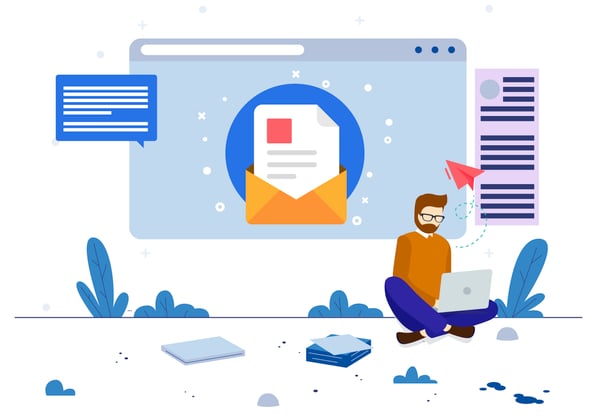
We are living in a very interesting time, what with the change in buyer’s behavior and the landscape of the sales course. In additionthe consumer space has become quite crowded, making it a struggle to acquire new customers.,
In the last five years, for example, customer acquisition costs have increased by 50% - which means that marketing has become more expensive.
Everyone is jumping on the bandwagon, and the party has gotten a little too tight. Whether you’ve already started feeling the effects, or you’re just forward-thinking and would like to nail down an effective strategy before the great marketing meltdown hits your business, you have come to the right place.
This is an ultimate guide to make sure you are on the right track toward success in your business.
 First off, let’s talk about customer acquisition. In the simplest terms, customer acquisition is the means of “gaining new customers.” And what makes one a customer? It’s when a person has actually purchased a product or service from you or your business.
First off, let’s talk about customer acquisition. In the simplest terms, customer acquisition is the means of “gaining new customers.” And what makes one a customer? It’s when a person has actually purchased a product or service from you or your business.
Customer acquisition plays a huge role in any business - especially in the SaaS industry. Prior to acquiring a customer, there is a need for leads to be generated, and as we mentioned in our previous post, lead generation and customer acquisition go hand in hand.
In order to measure whether a campaign is successful, in terms of how many customers came “through the door” and bought something, costs should be calculated.
In this case, any business with a goal of actually generating revenue from their efforts should learn how to calculate the cost per acquisition.
Customer acquisition cost (CAC) is an important measure of how much value a customer brings. By definition, it is “the cost associated with bringing a new customer or client to your business, such as marketing costs, events, and advertising.”
There are two ways CAC is calculated: either in reference to a specific campaign or by a date range or period. The CAC formula is pretty straightforward: all you have to do is take the total cost of your marketing efforts and divide it by the number of customer acquired for that specific campaign.
So:
MC/CA = CAC where MC = marketing costs; CA = customers acquired; CAC = customer acquisition cost
For a more accurate CAC, you must include all other costs related to your marketing campaigns, such as:
You may factor these in and add each to your marketing costs before dividing by the total number of customers acquired.
The simpler, straightforward formula can be applied to a single campaign while the second, more complex formula can be applied to campaigns within a specific time window (such as one fiscal year or one quarter).
For example, you spent a total of $1,000 in ads and promotion for a single campaign in Q4 of 2018, and 10 people became customers.
Your CAC, therefore, is $100. Depending on the status of your business, you can then decide whether this is a high or low CAC.
There are several ways to decrease your cost per acquisition:
In your overall marketing strategy, take a look at what you’re currently doing to acquire new customers - and see if there is space for new techniques. Are you doing any of the following:
Let’s break it down:
 This is any type of marketing done with the purpose of engaging your customers via long-form articles, blogs, videos, photos, infographics, emails and the like.
This is any type of marketing done with the purpose of engaging your customers via long-form articles, blogs, videos, photos, infographics, emails and the like.
The goal of content marketing is to tell a story to either inform, persuade, or entertain. In short, content marketing is going into a conversation with your potential customers.
Videos, for example, are being consumed voraciously by viewers on a daily basis. Hours are being spent on video-watching on social media, so it’s safe to say that this is the type of content the general audience enjoys - so why aren’t you doing it?
Take into account, though, that when you create video content, it should be something that your audience will enjoy and will deem worth of their time. Don’t produce content for the sake of producing content - that will prove to be counterintuitive in the end.

Ah, the wonderful world of social media. Everyone hangs out in platforms like Facebook, Instagram, Twitter, LinkedIn, Pinterest... Twitch even! Regardless of your brand, you are sure to have some space in any of these social media channels.
Identify the place where your audience are spending their time and be there. Greet them in the face, be omnipresent! Your goal is to be top-of-mind when they want to perform an action.
For example, you have a software that helps busy traveling entrepreneurs identify where coworking spaces are in the new city they’re in or which cafes have the best wifi situation.
You’d definitely want to jump on LinkedIn, considering that these business people must hang out on LinkedIn to nurture business connections; you can also pop up on Facebook via retargeting lookalike audiences. Be present with a solution to their needs, always, everywhere.
 Search Marketing is a technique used to gain online presence and traffic through paid and unpaid strategies on search engines such as Google, Bing, and Yahoo.
Search Marketing is a technique used to gain online presence and traffic through paid and unpaid strategies on search engines such as Google, Bing, and Yahoo.
When you ask your current customers what brought them to you or what problems you’ve solved for them, what do they say? What your customers say about your brand is your keyword.
Other people going on to the Internet are also actively searching for solutions to your keyword - millions of them daily! Tap into that! Manage your keywords wisely to ensure that when people look these up, you are brought up in search engines.
More importantly, make an effort to link all of your content together to point toward that specific keyword - everything you talk about in your content marketing and social media marketing campaigns should be consistent, not to mention be of authority. Consistent input = consistent output
 Perhaps the most “personal” type of marketing is email marketing. This is the process of popping into your potential and current customers’ inboxes periodically. What this does is convert prospects into paying customers and allow current customers to make a repurchase.
Perhaps the most “personal” type of marketing is email marketing. This is the process of popping into your potential and current customers’ inboxes periodically. What this does is convert prospects into paying customers and allow current customers to make a repurchase.
It’s also an avenue for engaging your users and leads in conversation - so when crafting emails to blast out to your list, keep in mind that you are talking to each individual separately.
When writing email content, add that personal touch so email recipients feel special. With that said, it’s important that you segment your list accordingly.
Ideally, you would have to segregate leads from users - you really wouldn’t want to keep sending “reminders to purchase” emails to users who have already bought from you; that would seem like you’re going overboard.
What you can send current customers are follow-ups: how is the product/software working for them? Do they have any suggestions on how to improve the product? Is there anything that they wished your software could do? How was customer support?
Asking your customers for feedback not only makes them feel that they’re special and cared for, it also makes them feel that they have a say and a bit of control in where your business is going. In addition it also help your business maintain a lower customer churn.
Other than copy, it’s important that your emails are visually pleasing as well. Nobody wants to read a lengthy black-and-white email (unless the copy is rocking, then we can make an exception!).
Be creative with your emails - but stay well within your branding, of course!
Moving on, let’s talk about Customer Lifetime Value…It's one of the most important metrics in a growing company. When you calculate the customer lifetime value along with customer acquisition cost, you can now measure how long it takes for your company to recoup the investment required to earn a new customer, such as the cost of sales and marketing.
Customer lifetime value is the total revenue a business can expect from a single customer account. It considers a customer's revenue value and compares it to the company's predicted customer lifespan.
This metric is being used to identify significant customer segments that are the most valuable to the company.
So… how do you calculate customer lifetime value (LVT)? You can do so by following these steps:
1. Calculate average purchase value. Calculate this number by dividing your total revenue in a time period (usually one year) by the number of purchases over the course of that same time period.
2. Calculate the average purchase frequency rate. Calculate this by dividing the number of purchases over the course of the time period by the number of unique customers who bought from your company during that time period.
3. Calculate customer value. Calculate this number by taking the average purchase value and multiplying it by the average purchase frequency rate.
4. Calculate average customer lifespan. Calculate this number by averaging out the number of years a customer stays with your company and continues purchasing from you.
5. Calculate LTV by multiplying customer value by the average customer lifespan. This will give you an approximate amount of revenue you can expect an average customer to generate for your company over the course of their business with you.
---
That was a lot to take in, right? But that’s exactly how business should be. It’s not a simple buy-and-sell scheme - there are other important factors that you need to take into consideration.
Be vigilant with your numbers; monitor them closely and ensure that you are getting the right data, so you can set up your strategy properly and lead your business to success.
You'd be surprised how effective it can be to just include a warm, smiling photograph of yourself. Or maybe you wouldn't be so surprised. Maybe you just don't surprise easily. Or maybe you're just incredibly wise. Yes. That must be it. Wise and warmly smiling. What a winning combination.

Shawn Bristow HubSpot, Inc.
You'd be surprised how effective it can be to just include a warm, smiling photograph of yourself. Or maybe you wouldn't be so surprised. Maybe you just don't surprise easily. Or maybe you're just incredibly wise. Yes. That must be it. Wise and warmly smiling. What a winning combination.

Shawn Bristow HubSpot, Inc.
There are many variations of passages of Lorem Ipsum available, but the majority have suffered alteration in some form, by injected humour, or randomised words which don't look even slightly believable. There are many variations of passages of Lorem Ipsum available, but the majority have suffered alteration in some form, by injected humour, or randomised words which don't look even slightly believable.